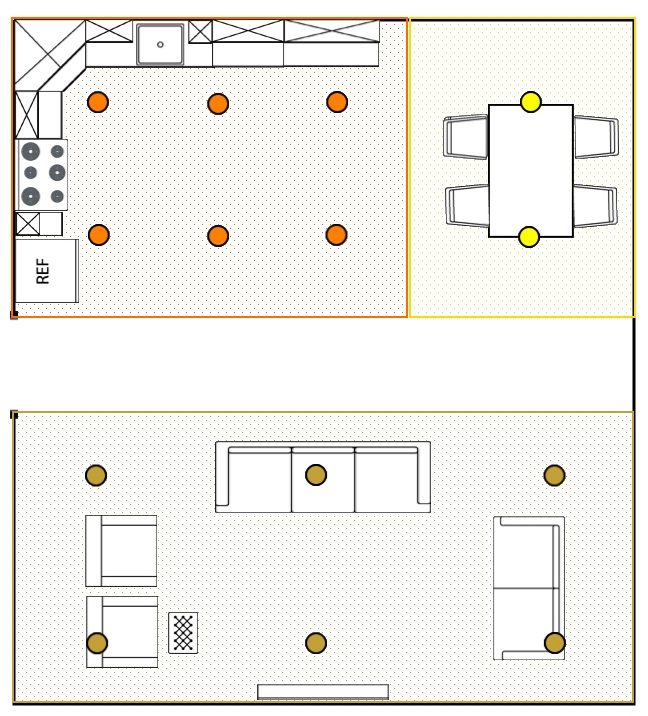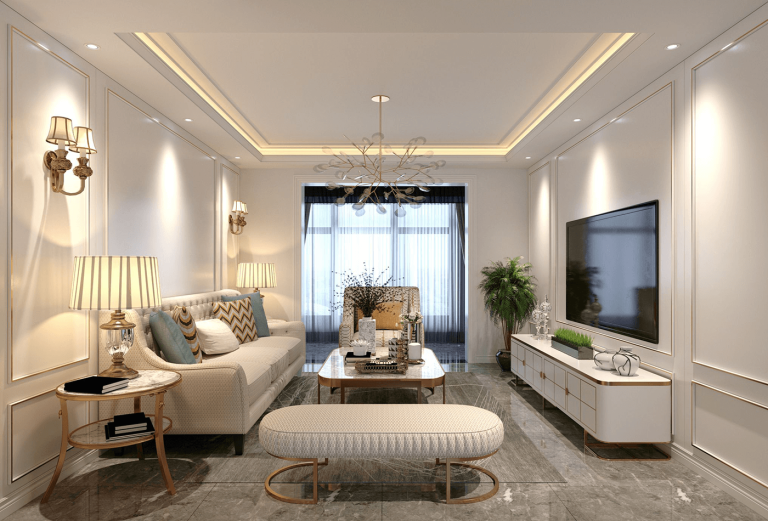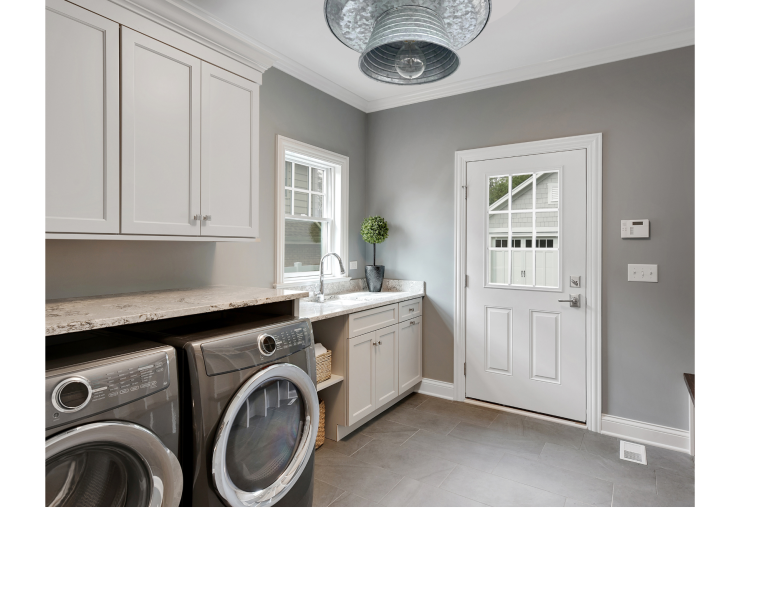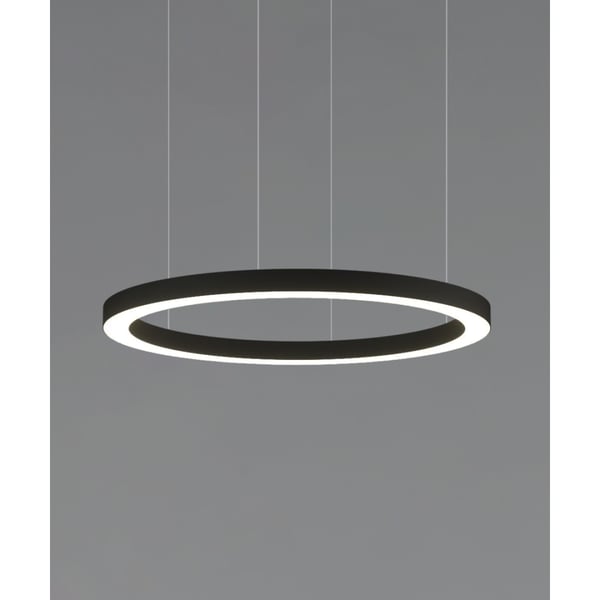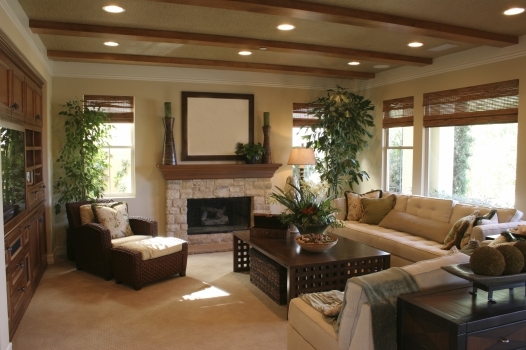How Many Canned Lights in a Room? Expert Lighting Guide
How many canned lights in a room? Use one canned light for every 4 to 6 square feet of ceiling space. For example, a 12×12 room (144 sq ft) typically needs 6 to 9 canned lights. Adjust based on room function, ceiling height, and desired brightness. Use dimmers for more control.
It’s a space that invites you to relax, work, or play with ease. The secret to achieving this perfect ambiance often lies in the number of canned lights you choose to install. But how do you determine the right number?
You might be wondering if there’s a magic formula or if it’s just about personal preference. The truth is, getting it right can transform your room from ordinary to extraordinary. You deserve a home that feels inviting and functional, and understanding the impact of lighting is a crucial step towards achieving that. Stick around, as we dive into the factors that will help you decide how many canned lights you need to create the ideal atmosphere in your room.
How Many Canned Lights in a Room?
Room Size Considerations
Choosing the right number of canned lights is crucial for any room. The size of the room plays a significant role in determining this number. A well-lit room enhances the mood, functionality, and aesthetic appeal. Understanding room size considerations ensures optimal lighting without overdoing it. Proper planning prevents common mistakes and ensures even light distribution.
Read More: Can Light Placement Living Room: Transform Your Space
Room Dimensions Impact Light Number
Large rooms require more lights to avoid dark corners. Small rooms need fewer lights to prevent excessive brightness. Measure the room’s length and width to get an accurate idea. This helps you determine how many lights are necessary. It’s important to balance light distribution for comfort.
Ceiling Height Considerations
Ceiling height affects how light spreads in a room. Higher ceilings may need more lights for adequate illumination. Lower ceilings distribute light more evenly with fewer fixtures. Consider using adjustable lights for tall ceilings. This ensures proper light coverage regardless of ceiling height.
Purpose Of The Room
The room’s function influences lighting needs. Kitchens and workspaces require more light for tasks. Living rooms might need fewer lights for a cozy atmosphere. Bedrooms benefit from softer lighting for relaxation. Tailor the number of lights to suit the room’s purpose. This creates a functional and pleasant environment.
Spacing Between Lights
Spacing impacts how light fills the room. Too close, and the room can be too bright. Too far apart, shadows may form. Calculate the distance based on room size and number of lights. Proper spacing ensures even lighting throughout the space. Adjust as needed for best results.
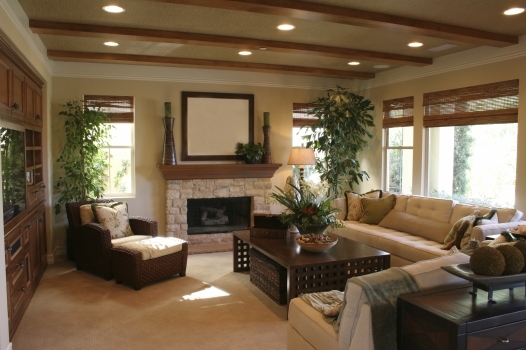
Credit: blog.recessedlighting.com
Purpose Of The Space
Determining the number of canned lights needed depends largely on the purpose of the space. Different rooms serve different functions, influencing lighting needs. Understanding how a room is used helps decide how many lights it requires. Consider the activities performed in each space. This ensures optimal lighting for comfort and functionality.
Living Room: Relaxation And Entertainment
The living room often serves as a relaxation hub. It’s where families gather, watch TV, or entertain guests. Good lighting enhances the ambiance. It should complement furniture and decor. For relaxation, soft lighting creates a soothing atmosphere. Adjust the number of lights to balance brightness and coziness.
Kitchen: Cooking And Meal Preparation
The kitchen is a workspace. Proper lighting is essential for safety and efficiency. Illuminating countertops and cooking areas is crucial. Bright lights help see ingredients clearly. They make food preparation easier. Ensure adequate lighting over the stove, sink, and island. The number of canned lights should cover all key areas.
Bedroom: Rest And Rejuvenation
The bedroom is a personal retreat. It’s designed for rest and relaxation. Soft lighting helps create a peaceful environment. Consider dimmable lights for flexibility. Adjust brightness based on time of day. Fewer lights may be needed compared to other rooms. Focus on bedside lighting and overall tranquility.
Bathroom: Grooming And Hygiene
Bathrooms require bright lighting for grooming tasks. Proper illumination is essential for mirrors and showers. Clear visibility helps with makeup application and shaving. Canned lights should provide ample light without shadows. Place them strategically for uniform brightness. Consider additional lighting near mirrors and vanity areas.
Office: Productivity And Focus
An office space demands efficient lighting. It should promote focus and productivity. Bright, even lighting reduces eye strain. Position canned lights to avoid glare on screens. Ensure adequate illumination of desks and workstations. The number of lights should support a conducive work environment.
Read More: Laundry Room Lighting: Illuminate Your Space Stylishly
Calculating Light Spacing
When setting up canned lights in a room, calculating light spacing can transform your space from dim and dingy to bright and inviting. Proper spacing ensures that light is evenly distributed, enhancing both functionality and aesthetic appeal. But how do you determine the right distance between each light? Let’s dive into the details.
How To Measure The Room
Start by measuring the length and width of your room. Use these measurements to calculate the total square footage. This helps you determine how much light the room needs.
Grab a tape measure or laser measurer for accuracy. Write down your measurements so you can refer to them later. This simple step sets the foundation for effective light spacing.
Understand The Rule Of Thumb
A common rule of thumb is to space the lights approximately the same number of feet apart as the diameter of the light in inches. For example, with 4-inch canned lights, place them about 4 feet apart.
This rule provides a quick guideline but remember, every room is unique. Consider the room’s purpose and existing lighting when deciding on spacing.
Consider The Purpose Of The Room
Different rooms have different lighting needs. A kitchen requires more focused lighting compared to a living room. Adjust your light spacing based on the room’s function.
Think about how you use the room and where more light might be needed. This thought process ensures your lighting plan meets your practical needs.
Calculate Using A Lighting Layout
Create a layout on paper or use online tools to visualize your lighting plan. Mark where each light will go, considering furniture placement and architectural features.
This step helps you see potential shadows or overly bright spots. Adjust spacing as needed to achieve balanced lighting.
Test With Temporary Fixtures
If you’re uncertain about your calculations, test your setup with temporary fixtures. Use lamps or other movable lights to simulate canned lighting.
This allows you to experiment with spacing before committing to permanent fixtures. It’s a practical way to ensure satisfaction with your lighting design.
Are you ready to transform your room with the right number of canned lights? Consider these tips and take the plunge. Your space deserves the perfect glow, and with thoughtful planning, you can achieve just that.

Credit: diy.stackexchange.com
Choosing The Right Bulb
Choosing the right bulb for canned lights is crucial. It impacts the room’s ambience and energy use. The right bulb can make a room feel warm or cool. It can highlight features or create a cozy atmosphere. Understanding bulb types helps in making the right choice.
Understanding Bulb Types
There are several bulb types for canned lights. LED bulbs are energy-efficient and long-lasting. They come in various brightness levels. Halogen bulbs offer a warm glow. They mimic natural daylight. CFL bulbs are less common now but still used.
Choosing The Right Brightness
Brightness is measured in lumens. Higher lumens mean brighter light. For living rooms, 1,500 to 3,000 lumens work well. Kitchens may need more. Around 5,000 lumens for good visibility. Bedrooms can use softer light, around 1,000 to 2,000 lumens.
Considering Color Temperature
Color temperature affects room mood. Measured in Kelvin (K), it ranges from warm to cool. Warm light (2,700K to 3,000K) is cozy. Ideal for living rooms and bedrooms. Cool light (4,000K to 5,000K) is energizing. Suitable for kitchens and workspaces.
Energy Efficiency And Costs
LEDs are most energy-efficient. They use less power and last longer. Lower energy use means lower bills. Initial cost is higher, but savings are greater over time. Halogen bulbs cost less upfront. They use more energy and need replacing sooner.
Installation Tips
Determining the number of canned lights needed depends on room size and lighting preference. Consider light spacing for balanced brightness. Proper placement ensures a cozy, well-lit environment.
When planning the installation of canned lights, or recessed lighting, it’s essential to do it right. Proper installation not only enhances the aesthetic appeal of your room but also ensures optimal lighting and energy efficiency. Here, we delve into some practical installation tips that will help you make the most out of your lighting project.
Plan Your Layout
Before you grab any tools, take some time to plan your layout. Consider the size and shape of the room. Larger rooms may require more lights to eliminate shadows, while smaller spaces can be adequately lit with fewer fixtures.
If you’re unsure, start by sketching a layout on paper or using a design app. Visualizing the setup can help prevent overlighting or underlighting a space.
Choose The Right Bulb Type
Not all bulbs are created equal. LED bulbs are energy-efficient and have a longer lifespan, making them a popular choice for canned lights. On the other hand, halogen bulbs can offer a warmer light.
Think about the mood you want to create in your room. A bright white light may be suitable for a kitchen, while a warm, soft glow might be better for a bedroom.
Proper Spacing Is Key
Spacing your canned lights correctly is crucial for a balanced look. A common rule of thumb is to space them about 4 to 6 feet apart. However, this can vary depending on the size and purpose of the room.
Ask yourself: how much light do I need in this area? Adjust the spacing to fit your needs and avoid creating a room that’s too harsh or too dim.
Mind The Ceiling Height
Ceiling height plays a significant role in how light is distributed. For ceilings that are higher than 8 feet, you may need to install more lights or choose bulbs with a higher wattage to ensure adequate illumination.
Consider using adjustable trims that can direct the light downwards if your ceiling is particularly high.
Test Before Finalizing
Once your lights are installed, don’t rush to close up the ceiling. Test the lighting setup first. Walk around the room, check for dark spots or overly bright areas.
If something feels off, you can make adjustments before sealing the deal. It’s much easier to make changes now than after everything is finalized.
Think About Dimmers
Dimmers can significantly enhance the functionality of your canned lights. They allow you to adjust the brightness according to your needs, offering flexibility from bright task lighting to a cozy atmosphere.
Consider adding dimmer switches to your installation plan. They not only save energy but also extend the life of your bulbs.
Consult A Professional If Needed
If you’re feeling overwhelmed or unsure, consulting a professional can be a wise decision. They can offer guidance and ensure everything is up to code.
Have you ever tackled a project only to find it more complex than anticipated? Sometimes, an expert’s insight can save you time and stress.
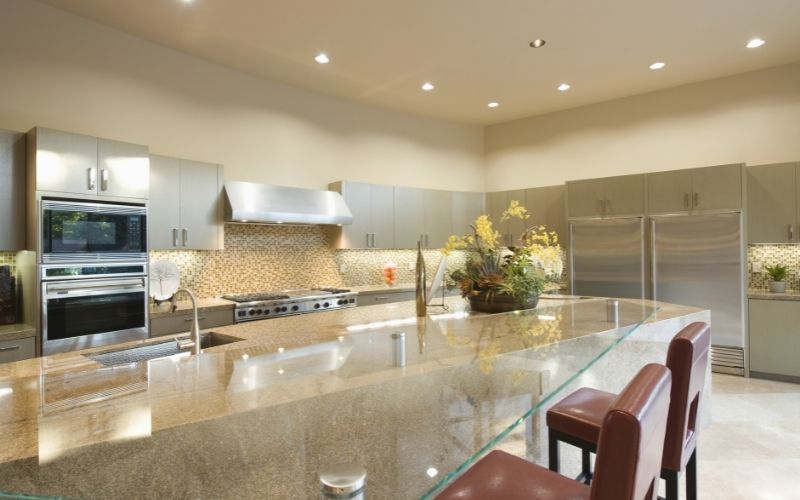
Credit: www.bazzsmarthome.ca
Frequently Asked Questions
How Many Recessed Lights Should I Put In My Room?
Determine recessed light quantity by room size, purpose, and brightness preference. Typically, space lights 4-6 feet apart. Use 1 light per 25 square feet for general lighting. Consider factors like ceiling height and fixture type. Adjust based on specific needs for task or ambient lighting.
Is It Better To Have 4 Or 6 Recessed Lights In Bedroom?
Four or six recessed lights depend on bedroom size and lighting needs. Smaller bedrooms benefit from four lights. Larger spaces may require six for balanced illumination. Assess room dimensions and personal preference to decide the optimal number of lights. Proper placement ensures even lighting coverage.
How Many Led Lights For A 12×12 Room?
For a 12×12 room, use 6 to 8 LED lights for optimal brightness. Choose 800 lumens per light for adequate lighting. Adjust based on personal preference and room usage. Ensure even light distribution for comfort and efficiency.
How Many Lights Should You Put In A Room?
Use one light per 100 square feet as a guideline. Consider room function and natural light. Use layered lighting for flexibility and ambiance. Adjust based on personal preference and room design.
How Many Canned Lights Are Ideal For A Room?
It depends on room size and purpose. Typically, use 1 light per 4-6 square feet.
Conclusion
Choosing the right number of canned lights enhances your room’s ambiance. Balance is key. Too many lights can overwhelm. Too few might leave areas dim. Measure your room size. Consider ceiling height and light spacing. Aim for even illumination. Test different arrangements if unsure.
Seek advice from a lighting expert if needed. Remember, lighting affects mood and functionality. Proper planning ensures a well-lit, comfortable space. Enjoy the perfect lighting solution for your needs.

